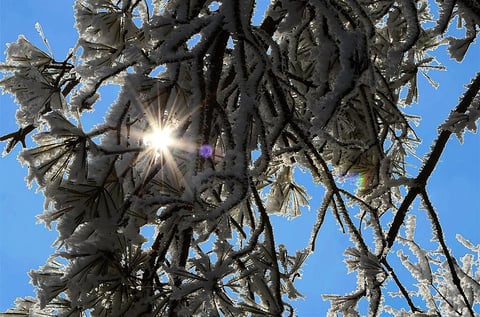Elms are synonymous with New England and New Hampshire. Sadly, these trees have been dying off at an almost unthinkable rate over the past 100 years or so. The deep decline in population is due to a disease called Dutch Elm Disease that is spread by a specific kind of beetle – and has proven incredibly difficult to contain. It’s a disease that can be headed off at the pass (with proper maintenance) – but still presents a massive threat to our elm population.
What is it?
 Courtesy of N.H. Historical Society
Courtesy of N.H. Historical Society
Dutch Elm disease is caused by a fungus that’s carried to trees via the native elm bark beetle or the European Elm bark beetle. The disease first showed up on record in the U.S. in 1928 with the first major break out in New Hampshire being found in 1949. Since then, has done unspeakable damage to the Elm population in North America. Of the 77 million elms on the continent, 75% of them were lost by 1989.
The disease is difficult to combat because it’s spread so easily. Bark Beetles deposit a fungus or spore onto the tree. The fungus then clogs the vascular system of the tree and prevents water from reaching the crown. From there, the disease spreads downward into the root system and then simply moves from tree to tree via root graft. The bark beetle stays around the tree – feeding on the bark while nesting and laying it’s eggs – even long after the tree has been cut down.
You’ll specifically begin to notice an infection when the leaves of a tree begin to turn yellow – even during times of the year like the dead of summer. Branches will begin to show signs of disease as well – with dark discoloration presenting itself throughout. If you see these signs, chances are your elm is infected.
What can you do about it?
One course of action you can take is to prune infected branches off the tree – however this needs to be done with extreme caution. While
this helpful article and detail these methods in full – The two big rules you want to adhere to is to never
prune a tree between April 1st and August 31st. The smell of freshly cut branches will attract elm bark beetles to your yard and you’ll more than likely just start up their cycle all over again.
The second rule is to burn the dead timber that you lop off. Remember – beetles don’t necessarily stop feeding and nesting once the tree is dead or cut down. So it’s important that you dispose of any timber so their life cycle doesn’t start up again.
Fungicides are also effective methods of prevention. The best one to use can vary widely though – and it largely depends on where your tree is located and how badly it is infected. However, taking this route should really go hand-in-hand with calling in an arborist. The thing about Dutch Elm Disease as opposed to other infections is that it moves very quickly and taking your time in making a decision isn’t something that you’ll have the luxury of doing. The disease may be far along enough where it doesn’t make sense to pursue treatment of any kind. So get an arborist, get a diagnosis – and especially when it comes to playing with pesticides or injecting trees with anything – it’s advisable that you get them to do it – so it’s done the right way.



 Courtesy of N.H. Historical Society
Courtesy of N.H. Historical Society